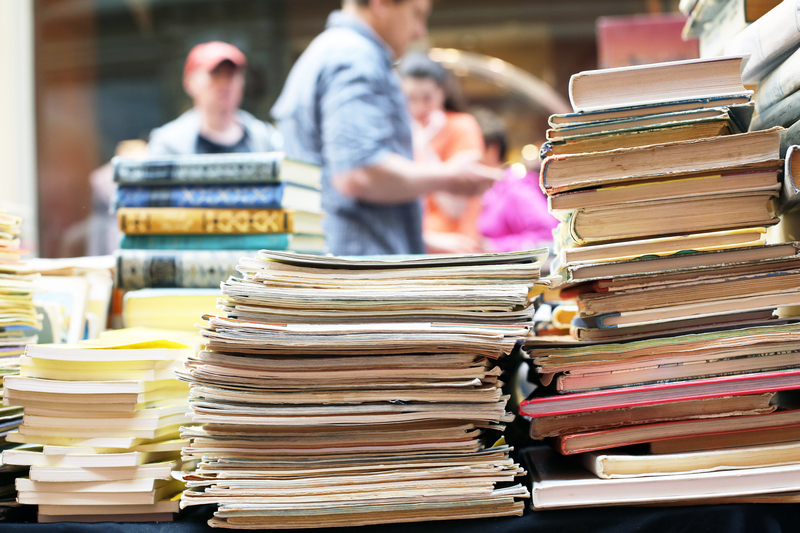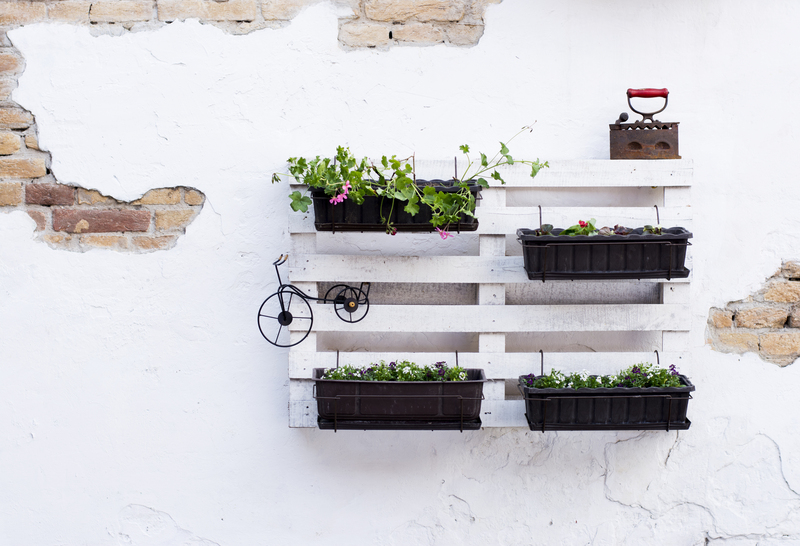What Happens to Pots and Pans After You Recycle Them?
Recycling plays a crucial role in managing the planet's resources and waste. Every day, households around the world discard old pots and pans--be it a scratched-up nonstick frying pan, a battered stainless steel pot, or an ancient cast iron skillet. But have you ever wondered what happens to pots and pans after you recycle them? This comprehensive guide explores the fascinating journey these kitchen staples take after you drop them off for recycling, and why their proper disposal matters for the environment and economy.

Why Should You Recycle Old Pots and Pans?
Pots and pans are typically made from valuable metals such as aluminum, stainless steel, cast iron, copper, or even a combination of different metals. Recycling these materials not only prevents landfill overflow, but also conserves raw resources, saves energy, and reduces carbon emissions. Understanding why and how these kitchen items are recycled is important for every eco-conscious consumer.
Environmental Benefits of Recycling Cookware
- Reduces landfill waste: Cookware can take decades or even centuries to decompose.
- Conserves resources: Recycling metals requires fewer raw materials.
- Saves energy: Producing metals from recycled materials uses significantly less energy than extracting from ore.
- Decreases pollution: Less mining and production means lower emissions and chemical runoff.
How to Recycle Pots and Pans: The First Step
Before your old pots and pans start their recycling adventure, it's crucial to know how and where to recycle them. Not all curbside recycling programs accept cookware, so proper sorting is necessary.
Identifying Recyclable Cookware Materials
Most pots and pans are made of:
- Aluminum
- Stainless steel
- Copper
- Cast iron
- Nonstick coated metals
Preparing Pots and Pans for Recycling
- Remove plastic or rubber components if possible, such as handles or knobs.
- Clean thoroughly to remove any food residue.
- Check for recycling labels or consult the manufacturer's website.
- Contact your local recycling center for specific instructions.
Items that cannot go in the curbside bin should be taken to a specialty recycler or scrap yard. Some cities even host periodic household goods collection days for items like cookware.
The Recycling Process: What Happens Behind the Scenes?
Once your used pots and pans enter the recycling stream, they embark on a multi-step journey. Here's a step-by-step look at what happens to pots and pans after you recycle them:
1. Sorting and Collection
Collected cookware arrives at a recycling facility or metal scrapyard. Staff sort items by metal type (e.g., aluminum, steel, copper) using sensors and magnets. Cookware with nonremovable plastic parts or hazardous coatings may be separated out for special handling or disposal.
2. Pre-Processing and Shredding
Large pots, heavy pans, and thick cast iron are typically shredded into smaller pieces. This step increases surface area, making it easier to remove contaminants and speeding up the melting process later on.
3. Melting and Purification
Next, the metal fragments are melted in industrial furnaces. Temperatures vary based on metal type: aluminum melts at about 1,220?F (660?C), while steel needs over 2,500?F (1,370?C). During melting, impurities such as leftover coatings or food particles float to the surface and are skimmed off.
4. Alloy Separation
Melting recycles the base metal, but pots and pans often contain metal alloys--mixtures of metals designed for durability or conduction. Advanced recycling facilities use chemical processes or refinement techniques to separate or re-alloy these metals to ensure they meet exacting specifications for reuse.
5. Forming and Repurposing
Once purified, the molten metal is cast into ingots, bars, or sheets. These raw materials are then ready for manufacture into new products. Companies may use this recycled metal to create:
- New pots and pans
- Automotive parts
- Bicycle frames
- Construction materials
- Cans and containers
Unique Recycling Challenges for Pots and Pans
While the process may seem simple, recycling cookware comes with some unique challenges:
- Nonstick coatings: Teflon and similar nonstick layers can't be recycled with metal and must be removed, often through heat treatment.
- Mixed materials: Many modern pans feature multiple layers or bonded materials, requiring extra processing.
- Plastic or silicone handles: These must usually be detached before melting to avoid contamination.
- Enamel coatings: Enamel layer adds complexity but can often be managed in the melting process.
What New Life Awaits Recycled Pots and Pans?
After undergoing separation and purification, the metals from recycled pots and pans embark on their second lives in various forms. Here are some of the most common uses for recycled cookware metals:
1. Brand-New Cookware
Manufacturers often use recycled stainless steel and aluminum in the production of new pots, pans, and kitchen utensils. In fact, many leading cookware brands now proudly advertise high percentages of recycled content in their products.
2. Construction and Engineering Materials
The metals recovered from pots and pans are frequently used to produce steel beams, aluminum siding, and other construction components. This not only diverts waste from landfills, but also bolsters the circular economy.
3. Automobile and Bicycle Parts
Aluminum and steel from recycled cookware can find their way into car bodies, engine components, and even bicycle frames. This is a testament to the durability and versatility of recycled metals.
4. Consumer Goods and Packaging
Cans, electronics casings, and even art pieces may contain metal once used in your kitchen. The cycle of recycling ensures nothing goes to waste.
What About Specialty Cookware? Cast Iron, Copper & Nonstick Pans
Cast Iron Recycling
Cast iron is tough and valuable for recycling. After being broken up and melted down, it joins other scrap metal to make new iron or steel products. Some companies and blacksmiths even remanufacture or refurbish old cast iron cookware instead of melting it, giving it a direct new life.
Copper Pots and Pans
Copper is a premium metal and is in high demand for electrical and industrial uses. Recycled copper from pots and pans can fetch high prices and is almost always recast into goods requiring excellent conductivity.
Nonstick Cookware
Nonstick pans require extra attention. The nonstick coating must be removed, often via a high-heat "burn-off" process that vaporizes the coating. Once stripped, the pan (usually aluminum or steel) can be recycled like other metals.
Alternatives to Recycling: Creative Ways to Repurpose Old Pots and Pans
While recycling is a great option, giving your cookware a second life at home is even better! Here are some upcycling ideas:
- Planter pots for your garden or balcony.
- Bird feeders made from old frying pans.
- Wall art--arrange vintage pans in creative patterns.
- Storage caddies for tools, art supplies, or other kitchen items.
Upcycling reduces energy use and can also add a unique, quirky charm to your space!
How to Dispose of Pots and Pans Responsibly
- Check with local recycling centers for their requirements.
- If unusable in curbside recycling, take to a scrap metal yard.
- Consider donation if the cookware is still functional.
- Contact the manufacturer about take-back programs.
- For specialty cookware, seek out specialty recyclers.
The Impact: Why Your Cookware Recycling Choices Matter
By recycling your old pots and pans, you contribute to the conservation of precious resources and support a sustainable economy.
- Each item recycled reduces mining and environmental impact.
- Your effort can inspire others to make eco-friendly choices.
- Properly recycled metal has nearly infinite re-use potential.

Frequently Asked Questions About Recycling Pots and Pans
Can all types of pots and pans be recycled?
No--all-metal pots and pans are generally recyclable, while those with certain coatings or electronics (like electric skillets) require special handling or may not be accepted by all programs.
What are the environmental benefits?
Recycling old cookware:
- Saves energy
- Reduces landfill waste
- Conserves natural resources
- Prevents pollution
What if my city doesn't accept pots and pans for recycling?
Seek out scrap metal yards or specialty e-waste/recycling facilities. Many accept cookware for free or for a nominal fee.
Conclusion: The Sustainable Journey of Your Old Pots and Pans
The journey doesn't end when you toss your beloved frying pan into the recycling bin. From sorting, melting, and purification to repurposing into new products, the process of recycling pots and pans is both fascinating and environmentally crucial. By recycling these everyday items, you join a global effort to minimize waste and maximize the use of Earth's resources. So, next time you upgrade your kitchen cookware, remember: recycling your pots and pans gives them an exciting new future--one where sustainability and innovation go hand in hand.
